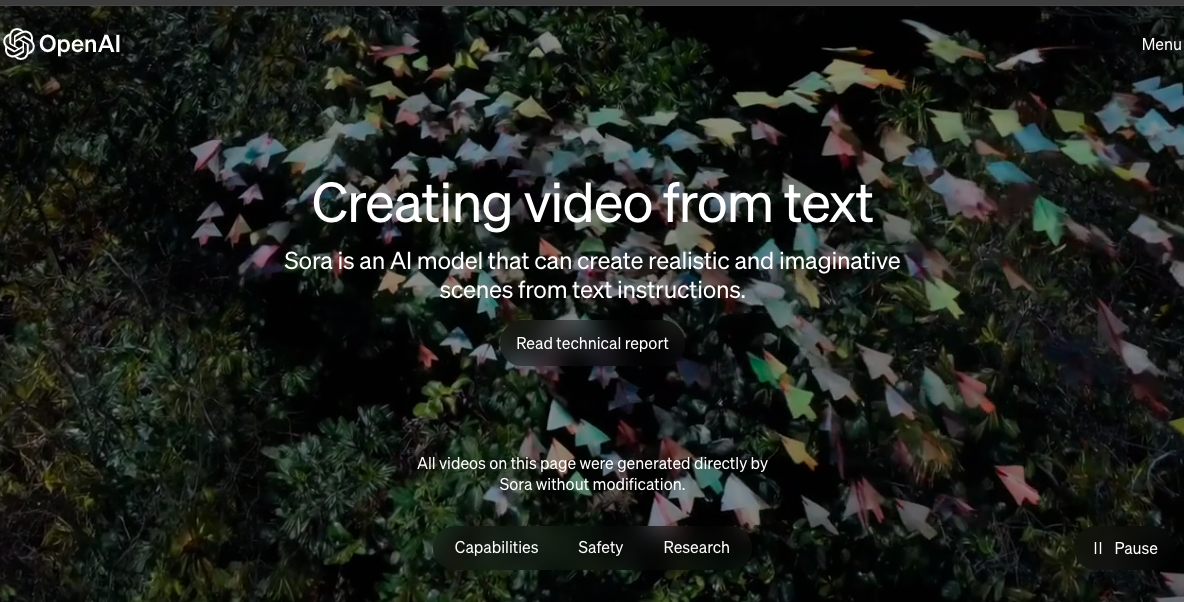










The AI Text-to-Video Generation Model Launched by OpenAI
What is Sora?
Sora is an AI video generation model developed by OpenAI, equipped with the ability to transform text descriptions into videos, creating scenes that are both realistic and imaginative. The model focuses on simulating motion in the physical world, aiming to assist people in solving problems that require interaction with the real world. In contrast to AI video tools like Pika, Runway, PixVerse, Morph Studio, and Genmo, which can only generate videos of four to five seconds, Sora can generate videos up to one minute in length while maintaining visual quality and a high degree of fidelity to user input. In addition to creating videos from scratch, Sora can also generate animations based on existing static images or extend and complete existing videos.

The main features of Sora
- Text-Driven Video Generation: Sora can generate video content that matches detailed text descriptions provided by users. These descriptions can involve various aspects such as scenes, characters, actions, and emotions.
- Video Quality and Fidelity: The generated videos maintain high-quality visual effects and closely adhere to the user's text prompts, ensuring that the video content matches the descriptions. Simulation of the Physical World: Sora is designed to simulate motion and physical laws in the real world, making the generated videos visually more realistic and capable of handling complex scenes and character actions.
- Handling Multiple Characters and Complex Scenes: The model can handle video generation tasks involving multiple characters and complex backgrounds, although there may be limitations in some cases.
- Video Extension and Completion: Sora can not only generate videos from scratch but also create animations based on existing static images or video clips, or extend the length of existing videos.
How to use Sora?
OpenAI Sora is currently not available for public access and is undergoing assessment by a red team (security experts). It is being tested and evaluated by a select group of visual artists, designers, and filmmakers. OpenAI has not specified a specific timeline for broader public availability. To gain access at this time, individuals need to qualify based on the expert criteria defined by OpenAI, which includes belonging to relevant professional groups involved in assessing the model's utility and risk mitigation strategies.
